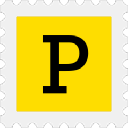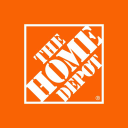How We Launched A $3.2K/Month Automated Software For Testing Websites
Hello! Who are you and what business did you start?
Hi there! My name is Fitz Nowlan and I am one of two co-founders of Reflect. Reflect creates and manages automated web regression tests to verify a web application's appearance and functionality. Using Reflect, you can create automated web tests that replicate how a user actually uses your web application---all without writing a line of code. The benefits are two-pronged: 1) creating a Reflect test is faster than using a code-based automation tool, and 2) anyone in your organization can create a test because it requires no programming. Thus, businesses improve the quality of their web applications while simultaneously saving time and allowing anyone to contribute to their testing efforts.
Our customers are technology companies who sell either B2B, or B2C, and deliver their services or products through their web application. Therefore, they have a critical dependency on their web application behaving as expected in order for them to make money. They’ll usually have employees test (i.e., use) their web application to ensure it’s working, but the testers can range from technical folks like web developers and testing engineers, to non-technical folks like marketing and...

Download the report and join our email newsletter packed with business ideas and money-making opportunities, backed by real-life case studies.

Download the report and join our email newsletter packed with business ideas and money-making opportunities, backed by real-life case studies.

Download the report and join our email newsletter packed with business ideas and money-making opportunities, backed by real-life case studies.

Download the report and join our email newsletter packed with business ideas and money-making opportunities, backed by real-life case studies.

Download the report and join our email newsletter packed with business ideas and money-making opportunities, backed by real-life case studies.

Download the report and join our email newsletter packed with business ideas and money-making opportunities, backed by real-life case studies.

Download the report and join our email newsletter packed with business ideas and money-making opportunities, backed by real-life case studies.

Download the report and join our email newsletter packed with business ideas and money-making opportunities, backed by real-life case studies.





















